
Wilhelm Victor Alfred Tepe was born in Amsterdam on the 24th of November 1840. He was the son of a German textiles-merchant who had moved to the Netherlands. Young Alfred spent much of his youth in Rijsenburg (U), where his family owned a house. He studied architecture at the Bauakadamie in Berlin from 1861 until 1864 but was not content with its Classical orientation. After returning from Berlin he built his first design, a shed in a more or less neo-Gothic style in the garden of the family house in Rijsenburg. In his free time he studied the work of E.E. Viollet-le-Duc, the French expert on Gothic architecture, as well as actual churches. From 1865 until 1867 Tepe worked for Vincenz Statz, one of the leading neo-Gothic architects of Germany, in Cologne. There he was involved with the restoration and completion of the cathedral, an experience that would become of a major influence on his work in the Netherlands.
In 1867 Tepe returned to Amsterdam, where he worked for an architect Ouderterp for a while, and moved to Utrecht in 1872. He became one of the leading artists associated with the St. Bernulphusgilde ('Guild of St. Bernulphus'), a group of catholic clergy (and later artists as well) who strived to bring back national traditions and craftmanship in religious art and architecture, and which became the dominant factor in this field in the archdiocese of Utrecht. Influences from medieval indigenous styles were mandatory, as was the use of indigenous materials, especially brick. In this archdiocese Tepe built most of his work. Between 1871 and 1905 he built ca. 70 churches, executed in brick with very little natural stone, and taking the late-Gothic 15th- and 16th-centuries' styles of the Lower Rhine and Westphalia as examples. The interior of the churches was provided by other members of the St. Bernulphus Guild, of which F.W. Mengelberg was the most important. Until 1882 Tepe had an almost complete monopoly in the field of church architecture in the province of Utrecht, the heart of the archdiocese. After the death of archbishop Schaepman that year other architects got more opportunities.
Besides churches Tepe designed various monasteries, schools, orphanages etc., all related to the catholic church, as well as a few private houses. He is the second most important architect of neo-Gothic in the Netherlands, after P.J.H. Cuypers. Throughout his entire career his work shows little evolution in style. There are however four periods in his career. Between 1871 and 1876 Tepe tried to develop his style and experimented with several types of churches. His designs from this period are sparsely decorated. The second phase, from 1876 until 1890 saw an increase in ornaments. Between 1890 and 1900 he built several churches with centralizing tendencies, mostly in the form of hall-churches. In the fourth period Tepe's development has ceased, and several of his designs are closely related to some of his older churches. Especially after 1900 Tepe occassionally built churches in Germany, when the competition in his own country became too strong. In 1905 he moved to Germany, where he designed several more churches, and died in Düsseldorf on November the 23rd 1920, a day before his 80th birthday.
The following is a listing of Tepe's churches and other works, arranged in a more or less chronological order. The list is not complete.
Shed in a more or less neo-Gothic style, built in the garden of Tepe's parents' house.
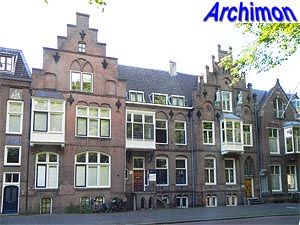
Double
house in
neo-Gothic style, for Tepe himself and his neighbour F.W. Mengelberg.
1872-1873 Slagharen (Ov): church St. Alphonsus
Tepe's first church, a simple one-aisled building. In 1905 W. te Riele added side-aisles. Church demolished in 1966.
Complex in neo-Gothic style. Enlarged by Tepe in 1877 and in 1886. Mostly demolished in 1986, facade remains.
1873-1875 Loo (G): church St. Antonius Abt
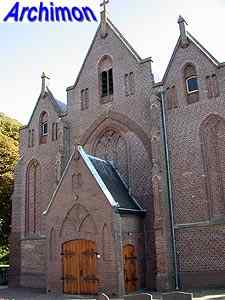
Small three-aisled neo-Gothic hall-church with three-sided choir. Part of the plan was a tower, but only its foundation was laid.
1873-1874 Doornenburg (G): church St. Martinus
Big basilica in neo-Gothic style, with tower. Enlarged with a new transept and choir by Tepe in 1884. Destroyed in 1944.
1874-1876 Arnhem (G): church St. Martinus
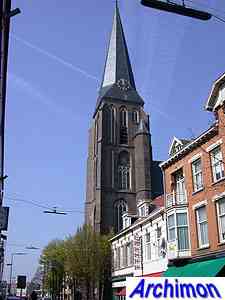
Three-aisled cruciform basilican church in the late-Gothic style of the Lower Rhine, with three-sided choir flanked by chapels. Tower of four segments was constructed a few years later, and is also flanked by a chapel. One of only a few churches were Tepe used natural stone as well as brick, although for details only.
1874-1875 Nieuwegein-Jutphaas (U): church St. Nicolaas
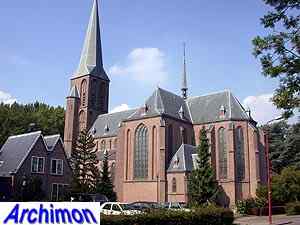
Three-aisled cruciform basilican church. Slim buttress-less tower of three storeys with polygonal stair-turret. This church is regarded as one of the most important of Tepe's designs.
1875 Dedemsvaart (Ov): church St. Vitus
Small three-aisled hall-church.
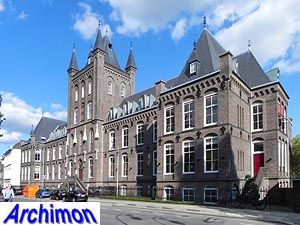
Big symmetrical complex in neo-Gothic style. Chapel at the back.
1875-1876 Mijdrecht (U): church St. Johannes de Doper
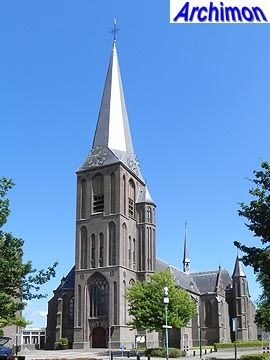
Three-aisled pseudo-basilican hall-church, inspired by the German 'Stufenhalle' type. The design is a predecessor of that of the church in Schalkwijk. Tower without buttresses in Lower Rhine Gothic style, decorated with niches and a polygonal stair-turret.
1875-1876 Bredevoort (G): church H. Hart en H. Georgius
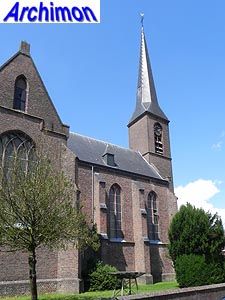
Small one-aisled neo-Gothic cruciform church with slim tower of four segments without buttresses.
1875-1876 Eibergen (G): church St. Mattheus
One-aisled church with lower and narrower choir. Tower flanked by a stair-turret and a baptistry. Replaced by a new church in 1934.
1875 Utrecht (U): buildings cemetery St. Barbara
Three buildings in neo-Gothic style. A chapel followed in 1880.
1876-1877 Workum (Fr): church St. Werenfridus
Three-aisled pseudo-basilican cruciform church.
1876-1877 Utrecht (U): church St. Willibrordus
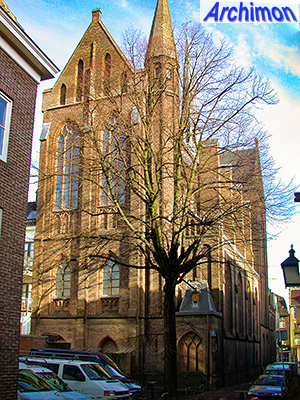
Relatively short but very tall neo-Gothic cruciform basilican church without tower but with a tall steeple. Almost completely closed-in by other buildings. Impressive St. Bernulphus-guild interior. The building is undergoing a major restoration.
1876-1877 Beesd (G): church H. Kruisverheffing
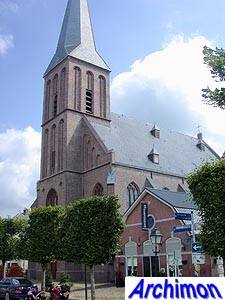
Three-aisled neo-Gothic hall-church with half-enclosed tower of three segments. Choir lower than the nave.
1877 Terborg (G): tower church St. Gregorius
Tower of four segments for an older church. When the church was replaced by J. Stuyt in 1913-1914, the tower was retained.
1877 Hellendoorn (Ov): church St. Nicolaas
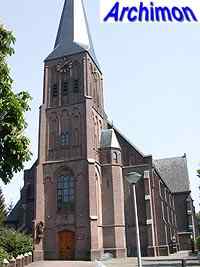
Three-aisled cruciform church in neo-Gothic style.
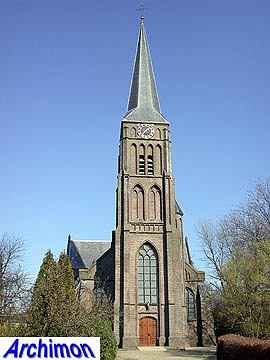
Three-aisled neo-Gothic pseudo-basilican church with a tower of three segments with stair-turret.
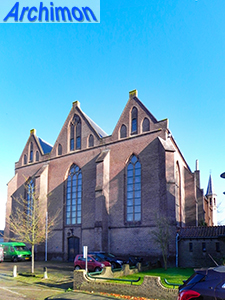
Three-aisled hall-church in simple neo-Gothic style, without a tower.
1877-1878 Pannerden (G): church St. Martinus
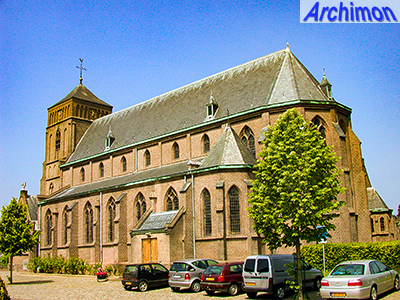
Three-aisled neo-Gothic basilican church with a tower of six short segments, inside of which an old Romanesque tower is irrecognizably encased. The tower is only a bit higher than the nave, the original tall spired was destroyed in 1944 and replaced by a shorter one.
1878 Angeren (G): church St. Bavo
Church with three aisled under one saddle-roof. Narrower choir. 1878 is year of consecration.
Chapel in Neo-Gothic style. Part of a Jesuite school. The chapel was destroyed in World War Two.
1878-1879 Schalkwijk (U) : church St. Michaël
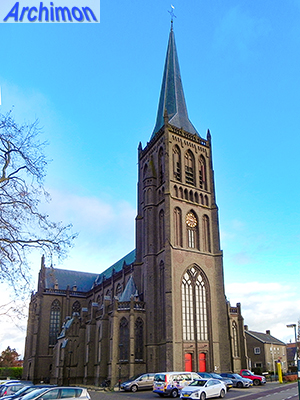
Neo-Gothic cruciform basilican church with tall western tower. Tribune-like niches in the third segment of the tower were inspired by those on the tower of the reformed church in Houten.
1879 Nieuwe-Pekela (Gr): enlargement church St. Bonifatius
Neo-Gothic transept for an older church in neo-Classical style. Was so badly constructed that within 20 years it had to be demolished and rebuilt. The entire church was demolished in 1988.
1879-1880 Kortenhoef (NH): church St. Antonius van Padua
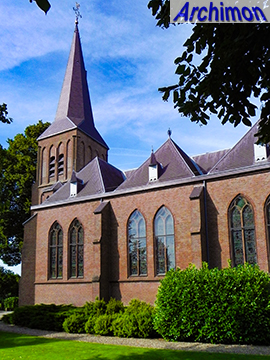
Small three-aisled neo-Gothic hall-church with tower.
1880-1883 Vinkeveen (U): church H. Hart van Jezus
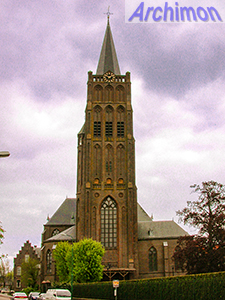
Large neo-Gothic three-aisled cruciform church with western tower, which was heightened with one segment in 1914. Choir with five-sided closure and a wide ambulatory, the only time Tepe used this feature.
1880 Winschoten (Gr): church St. Vitus
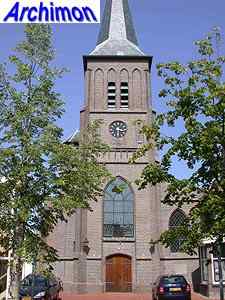
Small pseudo-basilican church without transept.
1880-1882 Ter Apel (Gr): church St. Willibrordus
Designed as a three-aisled hall-church with transept. Only three traves of the nave, the transept and the choir were built. In 1924 W. ter Riele completed the church in a similar style, with three three-aisled traves and a front with two flanking towers.
1880-1881 Bedum (Gr): church O.L. Vrouwe Hemelvaart
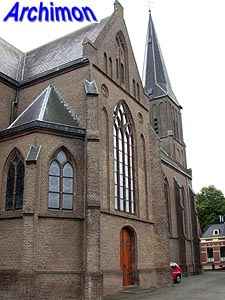
One-aisled cruciform church with buttresses inside the church.
1880-1881 Harlingen (Fr): church St. Michael
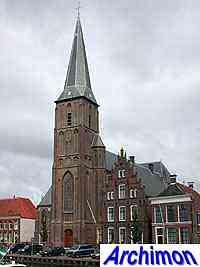
Big three-aisled neo-Gothic cruciform basilican church with three-sided transept-arms and tower.
1880 Utrecht (U): cemetery chapel St. Barbara
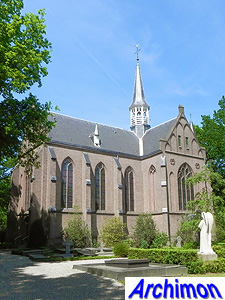
Fairly big aisleless cruciform chapel in neo-Gothic style.
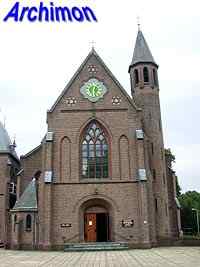
Small church in neo-Gothic style.
1881-1883 Amsterdam (NH): church St. Franciscus Xaverius ('De Krijtberg')
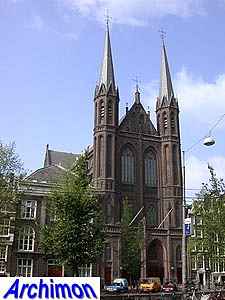
Three-aisled neo-Gothic cruciform basilican church with diagonally aranged chapels next to the choir. Front flanked by slim polygonal towers.
1882-1883 Amersfoort-Hoogland (U): church St. Martinus
Neo-Gothic church. Altered in 1957.
1882-1883 Borculo (G): church O.L. Vrouwe ten Hemelopneming
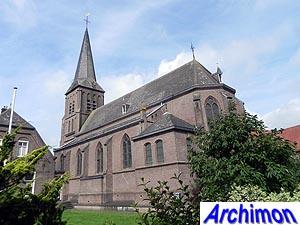
Small three-aisled neo-Gothic pseudo-basilican church with tower of four segments.
1882-1883 Steenwijk (Ov): church St. Clemens
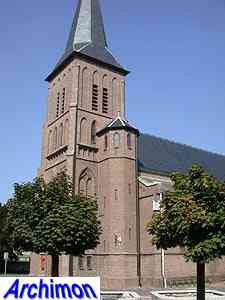
Small three-aisled pseudo-basilica in neo-Gothic style.
1882-1883 Balk (Fr): church St. Ludgerus
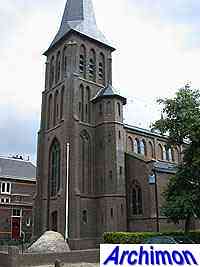
Three-aisled basilica in neo-Gothic style.
1882-1889 Amsterdam-Nieuwendam (NH): church St. Augustinus
Three-aisled cruciform church.
1883 Schagen (NH): church St. Christoffel
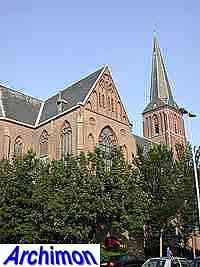
Neo-Gothic cruciform basilican church with slim tower with niches in its three storeys.
1883 Oldemarkt (Ov): church H. Willibrordus
Three-aisled hall-church. Lower choir flanked by apses.
1883 Driebergen (U): chapel convent Arca Pacis
Chapel in neo-Gothic style, with octagonal tower. Chapel replaced in 1964-1965, except for the tower.
1883 Huissen (G): sacristy church O.L. Vrouw Hemelvaart
Octagonal sacristy with stair-turret added to the choir of a late-Gothic church. Demolished in 1933-1934
1884 Zevenaar (G): tower church St. Andreas
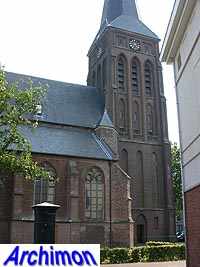
New tower of four segments for an older church.
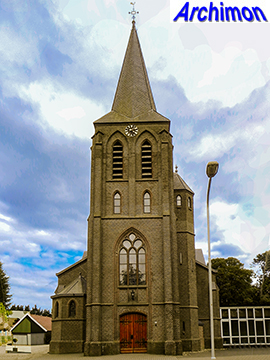
Three-aisled pseudo-basilica. Tower built in 1909. Extended with a transept by W. te Riele in 1910 and a new choir by C. Hardeman in 1929.
1884-1885 Houten (U): church O.L. Vrouw ten Hemelopneming
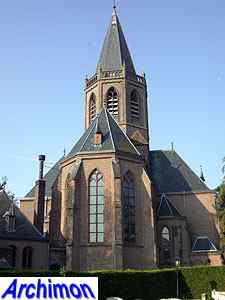
Neo-Gothic cruciform basilican church with octagonal crossing-tower, the only time Tepe used this feature for one of his churches. The idea came from a series of Romanesque village churches in the Belgian Ardennes. Ornamentation of the exterior shows Romanesque influences as well.
1884-1885 Maarssen (U): church H. Hart
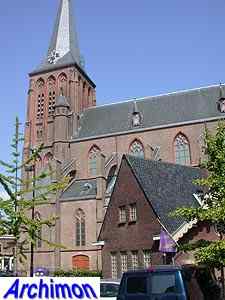
Cruciform basilican church with three-sided transept-arms and chapels in the corners between choir and transept. Relatively tall central aisle, and one of a few of Tepe's churches to feature flying buttresses. Tower of three segments.
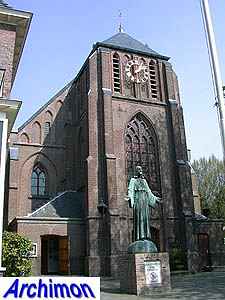
Three-aisled neo-Gothic hall-church with three-sided choir and a tower of four segments which was heavily damaged in 1944.
1885 Boxmeer (NB): tower church St. Petrus
New tower for late-Gothic church. Damaged in 1944 and demolished in 1946.
1885-1887 Ijsselstein (U): church St. Nicolaas
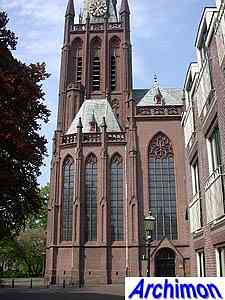
Three-aisled neo-Gothic hall-church in Westphalian style, with diagonal chapels next to the choir, which has a five-sided closure. Regarded as one of Tepe's best works.
1885-1886 Kilder (G): church H.Johannes de Doper
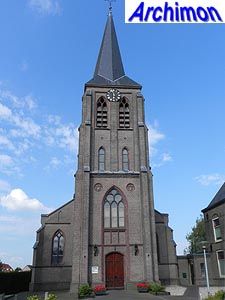
Three-aisled neo-Gothic pseudo-basilican church with tower of three segments.
1886-1887 Lobith (G): church O.L. Vrouwe Onbevlekt Ontvangen
Three-aisled cruciform basilican church with tower of three segments. In 1939-1940 the choir was replaced by a bigger one and the spire of the tower replaced by a saddle-back roof, all designed by B.J. Koldewey.
1887 Haaksbergen (Ov): enlargement and restoration church St. Pancratius
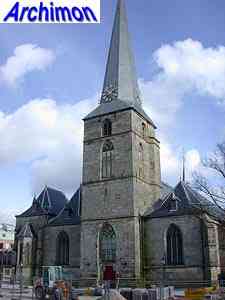
Neo-Gothic choir, northern side-aisle and western trave of the southern side-aisle added to a late-Gothic 16th century church in matching style.
1887-1888 Abcoude (U): church H.H. Cosmas en Damianus
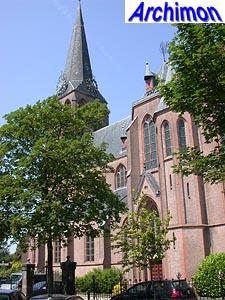
Three-aisled cruciform basilican church with tower and bevelled transept-arms and choir. The eastern trave of the southern side-aisle is deeper and higher than the others, containing confessionals below and a choir tribune above.
1887-1888 Valburg (G): church St. Jacobus de Meerdere
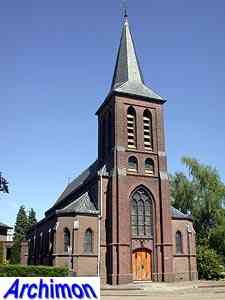
Small three-aisled neo-Gothic pseudo-basilican cruciform church with three-sided choir and an enclosed tower of three segments.
1887-1888 Benschop (U): church St. Victor
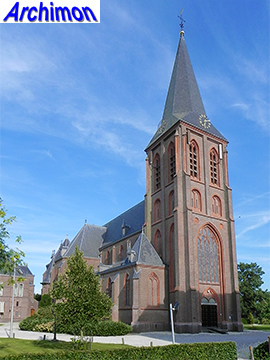
Cruciform neo-Gothic basilican church with partially enclosed western tower and three-sided choir and transept arms.
Chapel in neo-Gothic style. Demolished in 1986.
1889-1891 Baak (G): St. Martinus
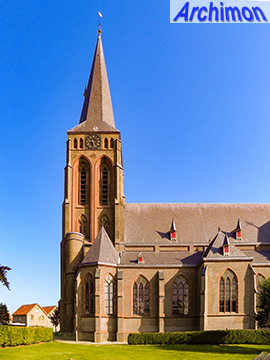
Three-aisled pseudo-basilican cruciform church with double transept and a three-storeys high stower.
1891-1892 Raalte (Ov): church H. Kruisverheffing
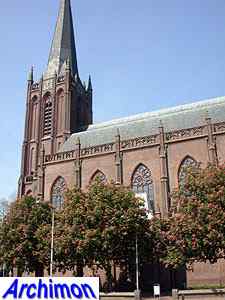
Three-aisled hall-church with tower, similar to the church in Ijsselstein and inspired by the St. Lamberti in Münster, Germany.
1891-1892 Heeten (Ov): church O. L. Vrouw Onbevlekt Ontvangen
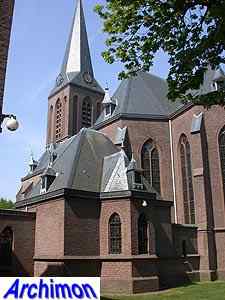
Three-aisled cruciform hall-church with polygonal transept-arms with diagonally positioned polygonal chapels between nave and transept.
1891-1892 Roodhuis (Fr): church St. Martinius
Three-aisled church.
1892-1894 Utrecht (U): church O.L. Vrouw ten Hemelopneming
Large three-aisled hall-church. Demolished 1972.
1893-1894 De Bilt (U): church St. Michael
Cruciform church with tower. Demolished in 1954.
1893-1894 Düsseldorf-Bilk (Germany): church St. Martin
Combination of a three-aisled cruciform hall-church in neo-Gothic style with a triangular ground-plan. Destroyed in 1945.
1894 Beltrum (G): tower church O.L. Vrouw Hemelvaart
Slim tower of four segments for an older church.
1894-1895 Arnhem (G): church St. Jan de Doper
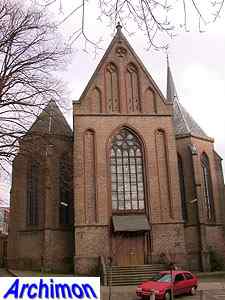
Three-aisled hall-church with three-sided choir and two-sided closures of the side-aisles.
1894-1895 Aalten (G): church St. Helena
Three-aisled neo-Gothic cruciform pseudo-basilican church. Demolished 1945. Only two lower segments of the tower remain and have been incorporated in the new church by J. van Dongen, built in 1950-1952.
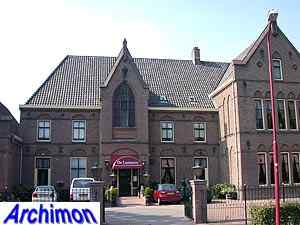
Complex in neo-Gothic style consisting of a convent and two wings used as primary schools.
1894-1895 Dieren (G): church O.L. Vrouw ten Hemelopneming
Three-aisled pseudo-basilica. Lower transept with stair-turret. Tower added by W. te Riele in 1924. Church demolished in 1977-1978, tower remains.
1895-1897 's-Heerenberg (G): church St. Pancratius
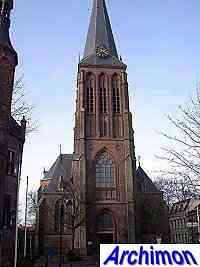
Three-aisled neo-Gothic cruciform basilican church with a choir flanked by chapels and a tower of four segments. The closures of choir, chapels and transept-arms are all three-sided.
1895-1896 Gendringen (G): church St. Martinus
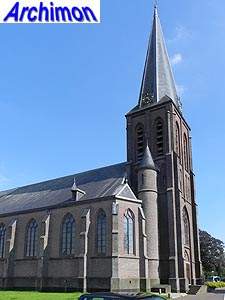
Three-aisled neo-Gothic hall-church with a tower of four segments.
1896-1897 Tubbergen (Ov): church St. Pancratius
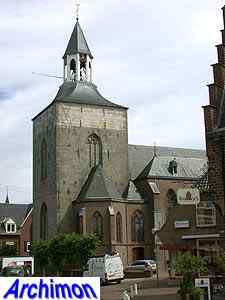
Three-aisled cruciform hall-church in neo-Gothic style. Church incorporates a medieval tower.
1898 Barneveld (G): church St. Catherina
Small neo-Gothic church. Demolished in ca. 1929 and tower incorporated in new church by C.A. Hardeman.
1898-1900 Utrecht (U): enlargement church St. Catharina
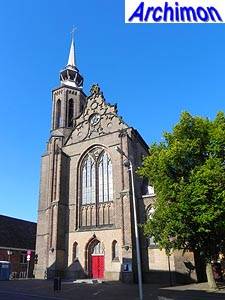
The front of this medieval church is removed and reconstructed several meters west of its original location. Tepe adds a trave to the nave. The reconstructed front is flanked by a tower, inspired by that of the townhall in Kampen (Ov), on one side, and a baptistery with stair-turret on the other.
1898-1899 Everdingen (U): church H.H. Petrus en Paulus
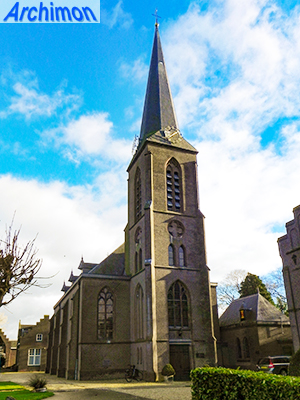
Neo-Gothic hall-church with a front tower and all three aisles under a single roof.
Convent in sober neo-Gothic style.
1899-1901 Utrecht (U): church St. Martinus
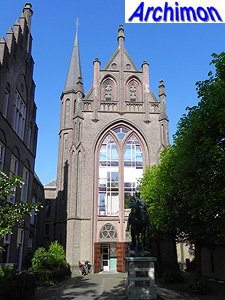
Neo-Gothic cruciform basilican church with three-sided transept-arms and diagonal chapels between the transept and the choir. The front shows similarities to the transept of the St. Michael in Schalkwijk. Rebuilt into apartments in 1987.
1901-1902 Losser (Ov): church Onze Lieve Vrouw
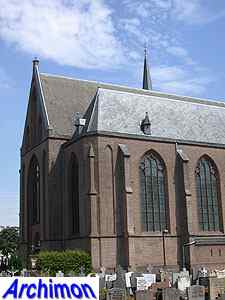
Long three-aisled hall-church with polygonal stair-turret at the north side.
1902-1904 Klazienaveen (Dr): church St. Henricus
Pseudo-basilica in neo-Gothic style. When completed in 1903 nothing more than a choir and a nave of two traves. Enlarged W. te Riele in 1924-1925. Demolished in 1965.
1902-1903 Glanerbrug (Ov): church O.L. Vrouw van de Rozenkrans
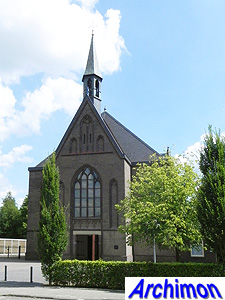
Three-aisled neo-Gothic hall-church with a single shield-roof covering all aisles. Steeple at the front of the roof. Originally built without choir and sacristy; these were added in 1925 and were designed by Joh.H. Sluijmer.
1904-1905 Herwen (G): church St. Martinus
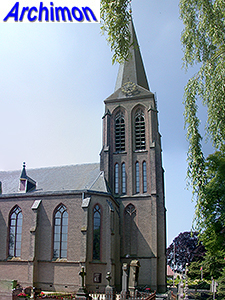
Three-aisled neo-Gothic hall-church with a tower of four segments and a choir with a three-sided closure.
Church in neo-Gothic style, built of sandstone.
1904 Brühl-Kierberg, Germany: church St. Servatius
Church in neo-Gothic style, built of brick.
Three-aisled neo-Gothic basilica. Completed in 1927. War damage repaired in 1949
1909-1911 Elberfeld, Germany: church St. Josef
Three-aisled hall-church in neo-Gothic style, with tower. Wide transept-arm at the north side. Mostly built of brick, but with decorative use of natural stone at the corners.